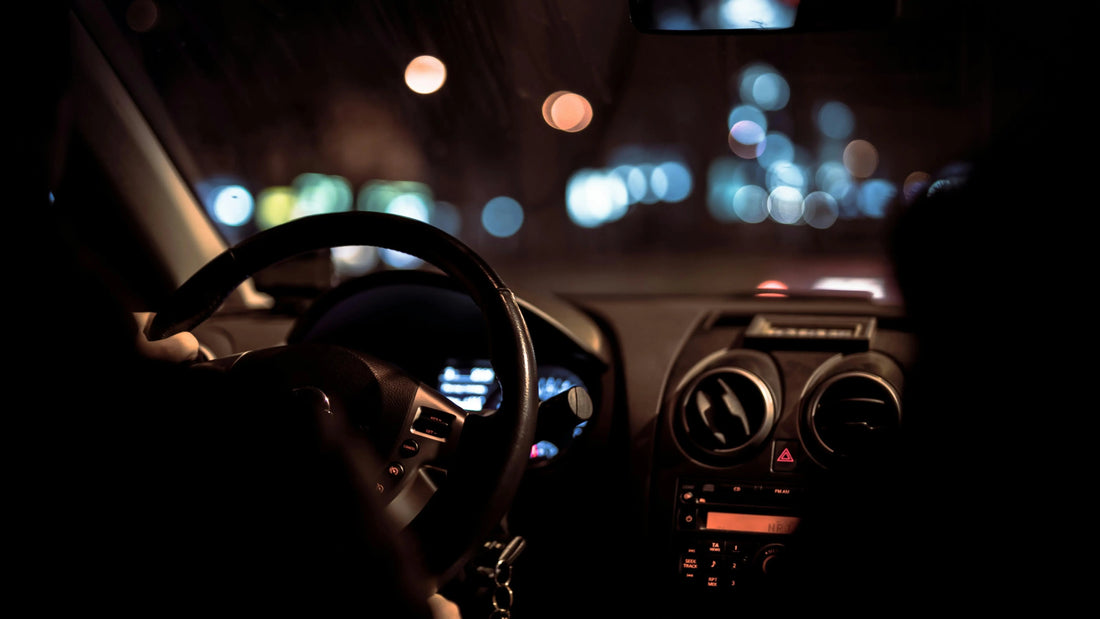Each year, Drowsy Driver Awareness Day reminds us of a silent but deadly threat on our roads—fatigue behind the wheel. For many, a good night’s sleep is a given. But for night shift workers—healthcare professionals, first responders, transportation workers, and countless others—fatigue is often a daily reality, and the drive home can be the most dangerous part of the job.
Impact of Drowsiness on Driving
According to the National Sleep Foundation:
- Drowsy driving is responsible for 300,000 car crashes each year in the U.S., of which more than 6,000 are fatal crashes.
- Working a night shift increases your risk of a drowsy driving accident by up to six times.
- Just one night of insufficient sleep can impair driving as much as alcohol.
And yet, the warning signs often go unnoticed. Microsleeps—brief, involuntary episodes of sleep that last just seconds—can occur without warning. A blink too long, a nod of the head, and a life-changing accident can happen in an instant.
Why Night Shift Workers Are Especially Vulnerable
All night shift workers face the challenges when it comes to drowsy driving. But two groups, in particular, are at heightened risk—those who work on the road and those who drive home after overnight shifts.
1. Nighttime Drivers: Uber, Lyft, and Long-Haul Truck Drivers
These workers spend their nights behind the wheel, often pushing through fatigue to meet deadlines, complete rides, or cover long distances. Their job performance—and safety—depends on staying alert during the hours when the body naturally wants to wind down. Prolonged night driving increases exposure to circadian dips in alertness, especially between 2 a.m. and 6 a.m., when the body is at its sleepiest.
Microsleeps, slowed reaction time, and impaired judgment can creep in unnoticed—and for those driving at highway speeds, the consequences can be catastrophic.
2. Overnight Workers Driving Home: Doctors, Nurses, Engineers, Law-Enforcement Officers, and More
Even if your job doesn’t involve driving, your commute home after a night shift may be one of the riskiest drives you take all week. After a full shift of physical or mental labor, the body’s natural drive to sleep—powered by both circadian timing and homeostatic sleep pressure—is at its peak. It’s like driving with your brain in "sleep mode."
Doctors finishing overnight hospital shifts, nurses, factory workers, security personnel, IT engineers pulling all-nighters—many face this dangerous trip home in a state of biological jet lag. The risk isn’t just theoretical: studies have shown that post-shift drowsy driving is associated with a sharp rise in car accidents and near-misses.
How Circadian Science Can Help
At the heart of drowsy driving after night shifts is a circadian rhythm misalignment problem.
Your circadian rhythm is your body’s internal 24-hour clock that regulates when you feel awake and when you feel sleepy. It’s synchronized primarily by light exposure, and under normal circumstances, it’s aligned with the day-night cycle: you feel alert during daylight and sleepy when it’s dark.
But for night shift workers, this alignment breaks down. When you stay awake and work during the night—especially under dim lighting—and then try to sleep during the day, your body is receiving conflicting signals. You’re asking it to be alert when it wants to sleep, and to sleep when it’s naturally wired to be awake.
This misalignment doesn’t just cause tiredness—it impairs cognitive function, slows reaction time, and increases your risk of microsleeps and mistakes. In fact, the early morning commute—right as your circadian rhythm is telling you to shut down—is one of the most dangerous times to be behind the wheel.
What You Can Do to Prevent Drowsy Driving
Whether you're working through the night or supporting someone who does, there are science-backed strategies to stay safer and more alert—on the job and on the road.
1. Use Light Wisely
Light is the most powerful tool we have to shift the body clock. For night shift workers, exposure to bright light during the shift (especially in the first half) can help delay the circadian rhythm, improving alertness and performance. This can be as simple as using bright overhead lights or targeted light therapy devices.
After work, it's just as important to avoid morning light, which can confuse the body’s rhythm and make it harder to fall asleep later. Wear blue-blocking glasses or use a smart sleep mask that blocks and times light exposure to support healthy circadian alignment.
2. Prioritize Sleep—and Protect It
Daytime sleep can be lighter and more fragmented. Create a dark, quiet, and cool sleep environment. Use blackout curtains, white noise machines, and limit caffeine several hours before bedtime. Let family or roommates know your sleep hours to minimize disruptions.
3. Take Breaks During Long Drives
If your job requires driving at night, schedule regular breaks to stretch, hydrate, and refresh your mind. Even a 15-minute nap during a rest stop can restore alertness. Keep healthy snacks and water on hand and consider pairing audio stimulation—like music or a podcast—with strategic caffeine use (ideally timed earlier in your shift or trip).
4. Avoid Driving Drowsy at All Costs
If you’re nodding off, blinking slowly, or forgetting parts of your drive, pull over immediately—even a 20-minute nap can be life-saving. Don’t rely on willpower to "push through" fatigue. Drowsy driving can be as impairing as driving under the influence of alcohol.
If possible, carpool with a coworker, use public transportation, or arrange for a ride share—especially after a long stretch of night shifts.
5. Speak Up and Seek Support
Night shift fatigue is a public safety issue—not a personal weakness. Talk to your employer about scheduling policies, break times, or access to fatigue management resources like light therapy tools. Share what you’ve learned with coworkers and advocate for healthier, safer shift practices.
6. Embrace Tools that Align with Your Body Clock
Technology can help bridge the gap between demanding schedules and biological limits. Consider tools that support circadian alignment—such as the light therapy devices, blue light filters, and scheduling apps that adapt light exposure to your work hours. Even small adjustments can improve sleep quality and reduce your risk on the road.
In fact, in a recent DoD-funded field study, night shift workers who consistently used the Lumos Smart Sleep Mask reported less difficulty staying awake during their post-shift commute. On average, users who used Lumos regularly rated their alertness higher compared to those who used it little or not at all (3.49 vs. 3.97 on a standardized scale). This seemingly small difference can have a big impact when you’re behind the wheel—especially during the drowsiest early morning hours when circadian sleep pressure is at its peak.

By personalizing light exposure based on your schedule, tools like Lumos help shift your circadian rhythm in the right direction, improving alertness during work and reducing the risk of fatigue-related incidents on the road.
The Bottom Line
Drowsy driving is preventable—and no one should risk their life just to get home from work. By recognizing the biological challenges faced by night shift workers and embracing circadian-aligned strategies, we can take a huge step toward safer roads and healthier lives.

